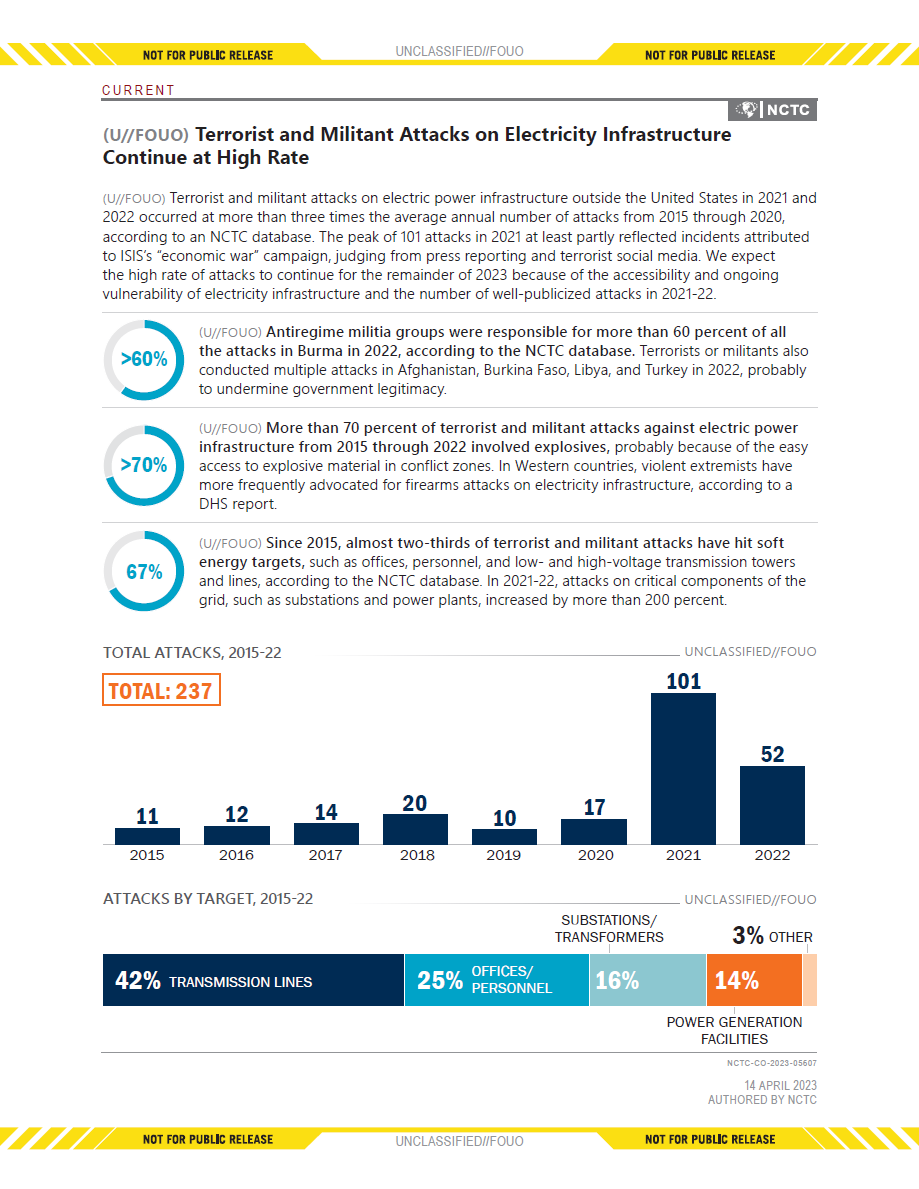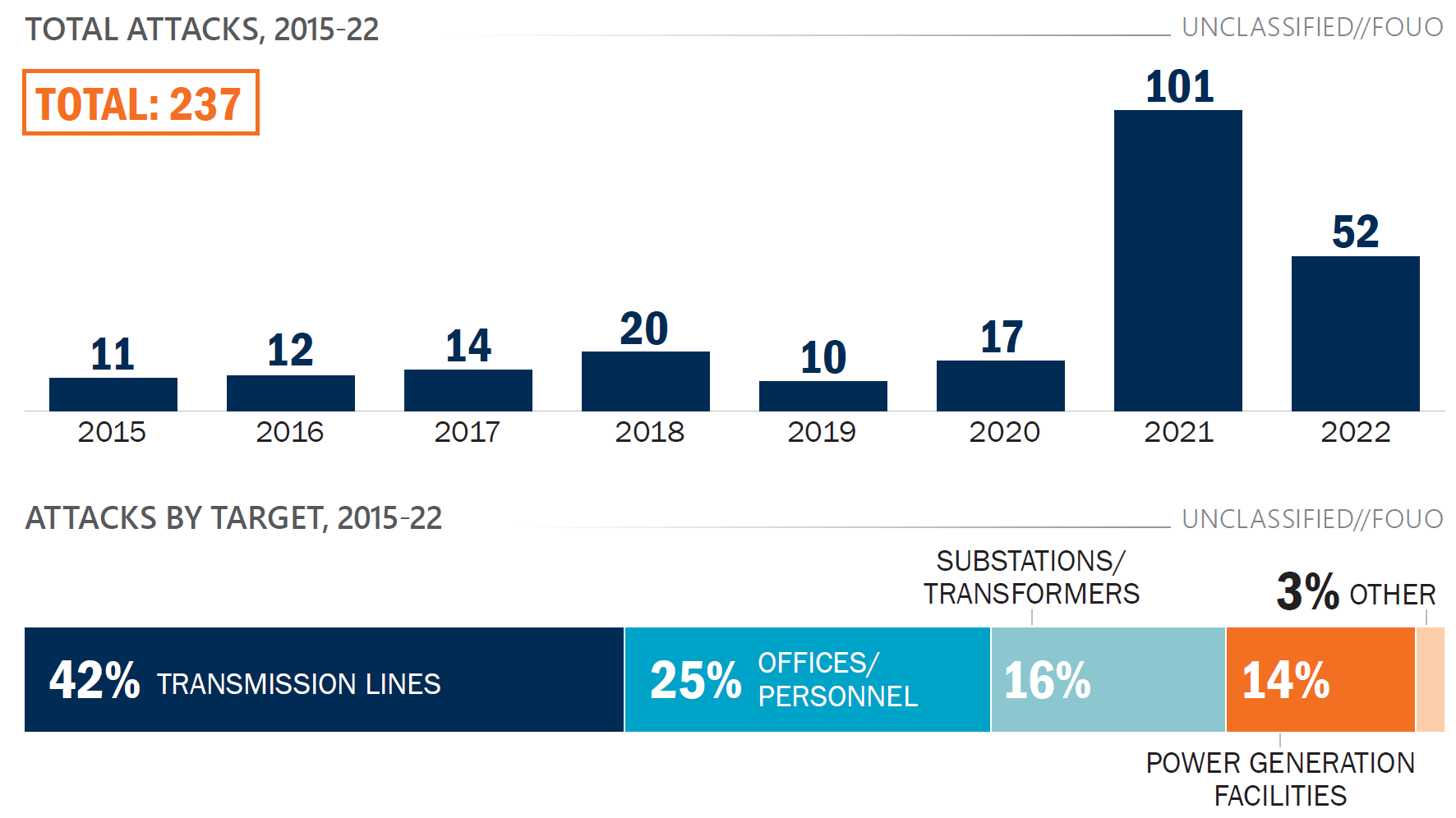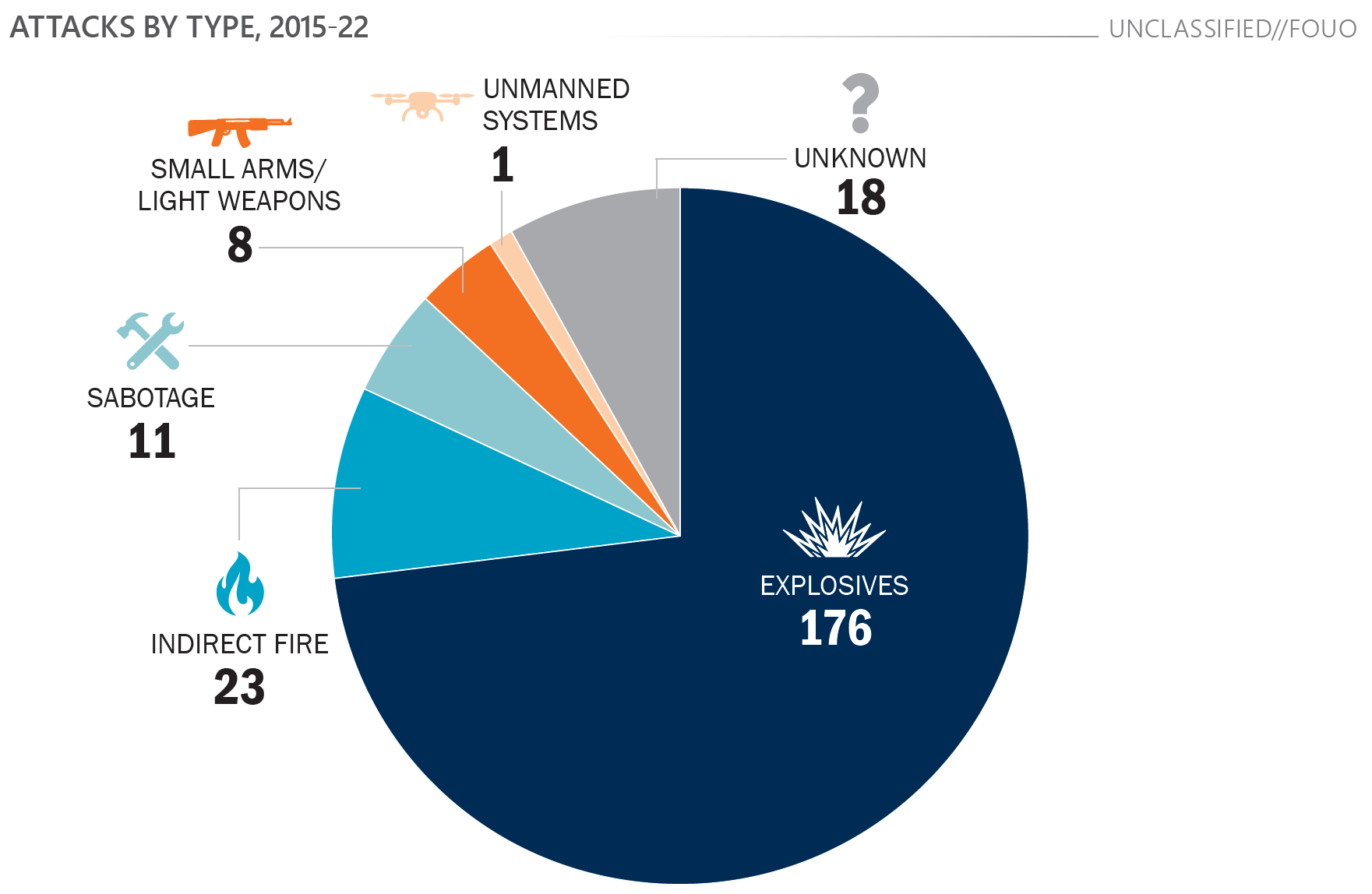(U//FOUO) Terrorist and militant attacks on electric power infrastructure outside the United States in 2021 and 2022 occurred at more than three times the average annual number of attacks from 2015 through 2020, according to an NCTC database. The peak of 101 attacks in 2021 at least partly reflected incidents attributed to ISIS’s “economic war” campaign, judging from press reporting and terrorist social media. We expect the high rate of attacks to continue for the remainder of 2023 because of the accessibility and ongoing vulnerability of electricity infrastructure and the number of well-publicized attacks in 2021-22.
(U//FOUO) Antiregime militia groups were responsible for more than 60 percent of all the attacks in Burma in 2022, according to the NCTC database. Terrorists or militants also conducted multiple attacks in Afghanistan, Burkina Faso, Libya, and Turkey in 2022, probably to undermine government legitimacy.
(U//FOUO) More than 70 percent of terrorist and militant attacks against electric power infrastructure from 2015 through 2022 involved explosives, probably because of the easy access to explosive material in conflict zones. In Western countries, violent extremists have more frequently advocated for firearms attacks on electricity infrastructure, according to a DHS report.
(U//FOUO) Since 2015, almost two-thirds of terrorist and militant attacks have hit soft energy targets, such as offices, personnel, and low- and high-voltage transmission towers and lines, according to the NCTC database. In 2021-22, attacks on critical components of the grid, such as substations and power plants, increased by more than 200 percent.
…




